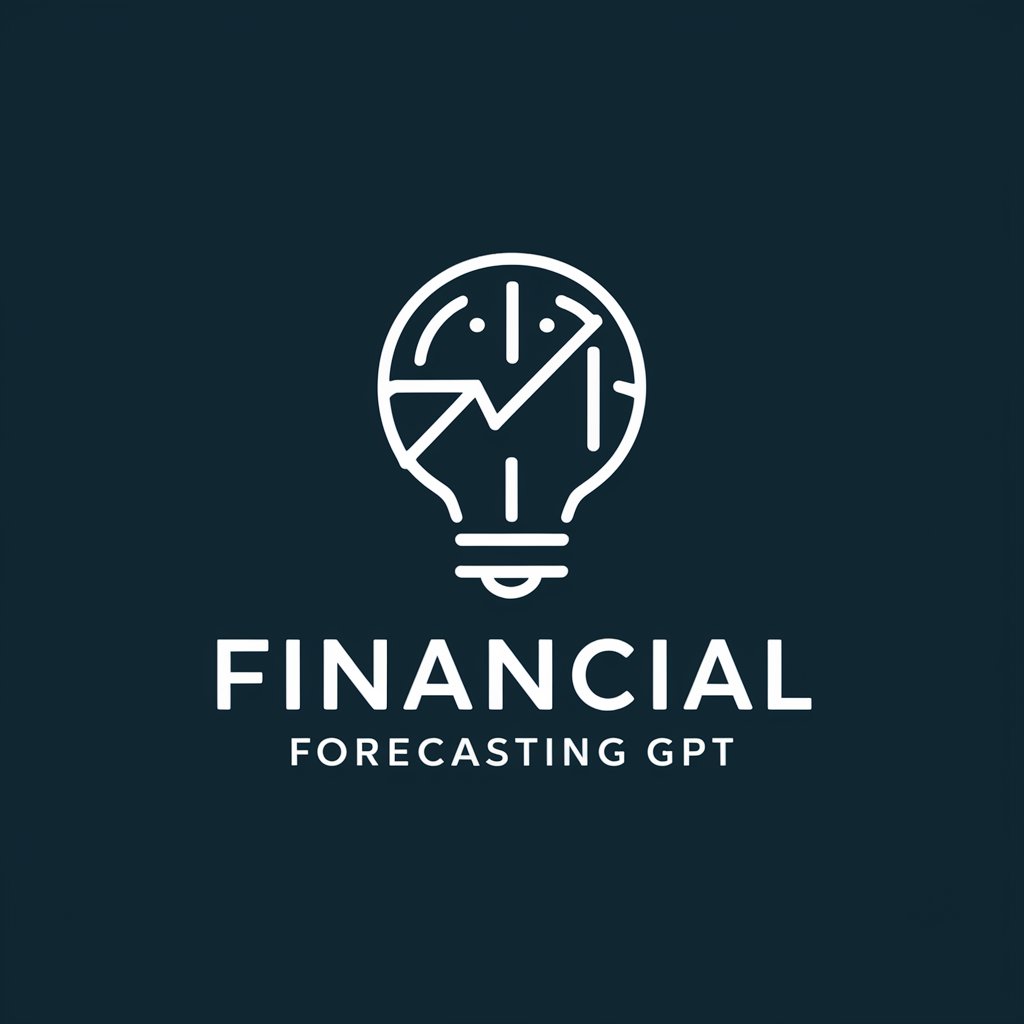Financial Forecasting GPT - Financial Insights Generation

Hello! How can I assist you with your financial queries today?
Empowering Financial Decisions with AI
Can you provide an analysis of the current market trends in...
What are the best investment strategies for...
How should I approach risk management when...
Could you explain the financial implications of...
Get Embed Code
Overview of Financial Forecasting GPT
Financial Forecasting GPT is designed as a cutting-edge tool aimed at transforming the way individuals and organizations approach financial planning and market analysis. Rooted in the latest AI technology, this platform offers a range of predictive analytics and insights into financial markets, enabling users to make informed decisions. Through its advanced algorithms, it can analyze vast datasets, identify patterns, and predict future market trends. For example, it can simulate how changes in macroeconomic indicators might affect stock prices or forecast the future performance of a portfolio based on historical data and current market conditions. Powered by ChatGPT-4o。

Core Functions of Financial Forecasting GPT
Market Trend Analysis
Example
Analyzing historical data to predict future market movements.
Scenario
A financial analyst uses the tool to evaluate potential future performance of a specific sector, such as technology, by examining past trends and current news related to key companies within that sector.
Portfolio Simulation
Example
Simulating the performance of investment portfolios under various market conditions.
Scenario
An investment manager simulates different asset allocations within a client's portfolio to identify the combination that offers the best balance between risk and return, given projected future market conditions.
Risk Management
Example
Identifying and assessing potential risks to minimize losses.
Scenario
A risk manager uses the platform to forecast potential financial risks associated with an upcoming product launch, including the impact of market volatility and competitor actions.
Economic Forecasting
Example
Predicting economic indicators and their impact on markets.
Scenario
Policy makers utilize the tool to forecast economic indicators such as inflation rates, GDP growth, and unemployment rates, to guide fiscal policy decisions.
Target User Groups for Financial Forecasting GPT
Financial Analysts
Professionals tasked with analyzing investments, market trends, and financial statements to guide trading and investment decisions. They benefit from the tool's predictive analytics to forecast market movements and advise clients or their organization.
Investment Managers
Individuals responsible for managing portfolios and investment strategies for clients. They can leverage the tool to simulate portfolio performance under different scenarios, optimizing asset allocation for risk and return.
Risk Managers
Professionals focused on identifying, assessing, and prioritizing risks to minimize and control the probability or impact of unfortunate events. The tool aids in forecasting financial risks and developing strategies to mitigate them.
Policy Makers
Government officials and regulatory bodies who require accurate economic forecasts to make informed policy decisions. The tool's ability to predict economic indicators helps in planning and implementing fiscal policies effectively.

Guidelines for Using Financial Forecasting GPT
1
Begin by visiting yeschat.ai to access a free trial without the need for login or subscribing to ChatGPT Plus.
2
Identify the financial forecasting or analysis task you need assistance with. This could range from stock market analysis, investment portfolio recommendations, to risk assessment.
3
Prepare your data or financial query in a clear and concise manner. This may involve gathering relevant financial statements, market data, or specific financial metrics you wish to explore.
4
Interact with Financial Forecasting GPT by inputting your data or query. Utilize the provided prompts or questions to guide the AI in understanding your request more accurately.
5
Review the insights, analysis, or forecasts provided. For optimal results, consider asking follow-up questions or requesting further clarification on specific points to deepen your understanding.
Try other advanced and practical GPTs
Scrappy
Empower your data collection with AI

Laravel Expert
Empowering Laravel Development with AI

Champion meaning?
Empowering Insights with AI

Thumbnail Genius
Craft Eye-Catching Thumbnails with AI

CoachGPT
Empowering decisions with AI insight

Lay It Down meaning?
Clarifying Language with AI Insight

US Energy Sector
Empowering Energy Decisions with AI

【飲食業界】求人広告アシスタント
Craft Perfect Food Industry Ads with AI

Agente T-3000
Strategize with AI, Enlightened by Terminator Lore

SushiGPT
Dive into the art of sushi with AI

GptOracle | My Personal Nutritionist
AI-powered Personal Nutritionist

ElementGPT
Discover the Elements with AI

Detailed Q&A about Financial Forecasting GPT
What types of financial data can Financial Forecasting GPT analyze?
Financial Forecasting GPT can analyze a wide array of financial data, including but not limited to, stock market data, financial statements (income statements, balance sheets, cash flow statements), economic indicators, and currency exchange rates. The tool is designed to interpret and provide insights on financial trends, performance metrics, and potential investment opportunities.
Can Financial Forecasting GPT provide personalized investment advice?
While Financial Forecasting GPT can offer insights and analysis on market trends, stocks, and financial instruments, it does not provide personalized investment advice. Users should consider it a tool for enhancing their financial literacy and aiding in investment decision-making processes, rather than a substitute for professional financial advisory services.
How does Financial Forecasting GPT handle data privacy?
Data privacy is a top priority. All interactions are designed to be secure, ensuring that user data is handled with confidentiality and integrity. Users are encouraged to avoid sharing sensitive personal information or proprietary financial data.
Is there a limit to the complexity of forecasts Financial Forecasting GPT can generate?
While Financial Forecasting GPT is equipped to handle a variety of complex financial forecasting tasks, the accuracy and relevance of forecasts may vary based on the availability and quality of data provided by the user. Complex models and nuanced market factors are considered, but users should be aware of potential limitations in predictive modeling.
How can users optimize their experience with Financial Forecasting GPT?
For the best experience, users should provide clear and specific financial queries, utilize detailed financial data when available, and engage in iterative questioning to refine insights and forecasts. Staying informed on financial terminology and current market trends can also enhance the interaction and understanding of the analysis provided.
